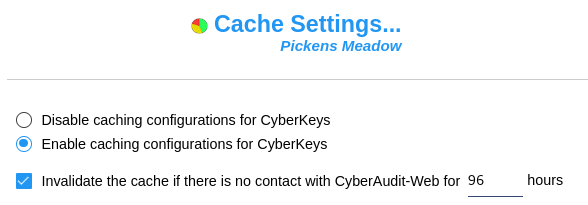 Caching on a Flex II system
Caching on a Flex II system

Note: - This article describes caching for the Flex II system. Caching for the original Flex 1 system is described here.
Flex System Hubs will store both door and CyberKey configuration records in their memory. Door access records are always cached locally. CyberKey configuration records include CyberKeys issued to people and for missions. This allows the Flex System hub to grant access to a door or to program the CyberKey with its set of expiration and access permissions regardless of whether CyberAudit-Web is available on the network. These "cached" records enable the Flex System Hub to respond to requests very quickly. If a record to program a CyberKey or open a door is not stored locally, the Flex II Controller hub will contact CyberAudit-Web for instructions.
By default CyberAudit-Web caches all possible keys and missions in each Flex Hub plus all access records for any doors it controls. For CyberKeys and missions numbers, the use of templates shared among multiple keys can greatly increase efficiency in the system because the amount of data transmitted and stored can be significantly reduced.
While a Flex II Controller hub can continue to operate for a period of time without contacting CyberAudit-Web, it was not designed to operate this way indefinitely. It must eventually contact CyberAudit-Web to upload its data, free its memory, and synchronize with any new instructions.
Caching of CyberKey configuration records may be disabled completely to force the Flex System hub to contact CyberAudit-Web for each requested mission or CyberKey update.

